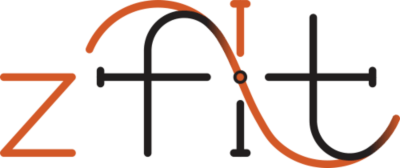Space, Observable and Range#
Inside zfit, Space defines the domain of objects by specifying the observables/axes and maybe also
the limits. Any model and data needs to be specified in a certain domain, which is usually done using the
obs argument. It is crucial that the axis used by the observable of the data and the model match, and this matching is
handle by the Space class.
import zfit
from zfit import z
import numpy as np
obs = zfit.Space("x")
model = zfit.pdf.Gauss(obs=obs, ...)
data = zfit.Data.from_numpy(obs=obs, ...)
Definitions#
Space: an n-dimensional definition of a domain (either by using one or more observables or axes), with or without limits.
Note
Difference to RooFit
compared to ``RooFit``, a space is **not* the equivalent of an observable but rather corresponds
to an object combining a set of observables (which of course can be of size 1). Furthermore,
there is a strong distinction in zfit between a Space (or observables)
and a Parameter, both conceptually and in terms of implementation and usage.*
Observable: a string defining the axes; a named axes.
(for advanced usage only, can be skipped on first read) Axis: integer defining the axes internally of a model. There is always a mapping of observables <-> axes once inside a model.
- Limit The range on a certain axis. Typically defines an interval. In fact, there are two times of limits:
rectangular: This type is the usual limit as e.g.
(-2, 5)for a simple, 1 dimensional interval.
A space should usually be created with limits that define the default space of an object.
This correspond for example to the default normalization range norm or sampling range.
obs1 = zfit.Space("x", 0, 1)
obs2 = zfit.Space("y", -4, 1)
model1 = zfit.pdf.Gauss(obs=obs1, ...)
model2 = zfit.pdf.Gauss(obs=obs2, ...)
# creating a composite pdf
product = model1 * model2
# OR, equivalently
product = zfit.pdf.ProductPDF([model1, model2])
assert obs1 * obs2 == product.space
The product is now defined in the space with observables ['x', 'y']. Any Data object
to be combined with product has to be specified in the same space.
# create the space
combined_obs = obs1 * obs2
data = zfit.Data.from_numpy(obs=combined_obs, ...)
Now we have a Data object that is defined in the same domain as product
and can be used to build a loss function.
Limits#
In many places, just defining the observables is not enough and an interval, specified by its limits, is required. Examples are a normalization range, the limits of an integration or sampling in a certain region.
Using the limits#
To use the limits of any object, the methods inside()
(to test if values are inside or outside of the boundaries)
and filter() can be used.
